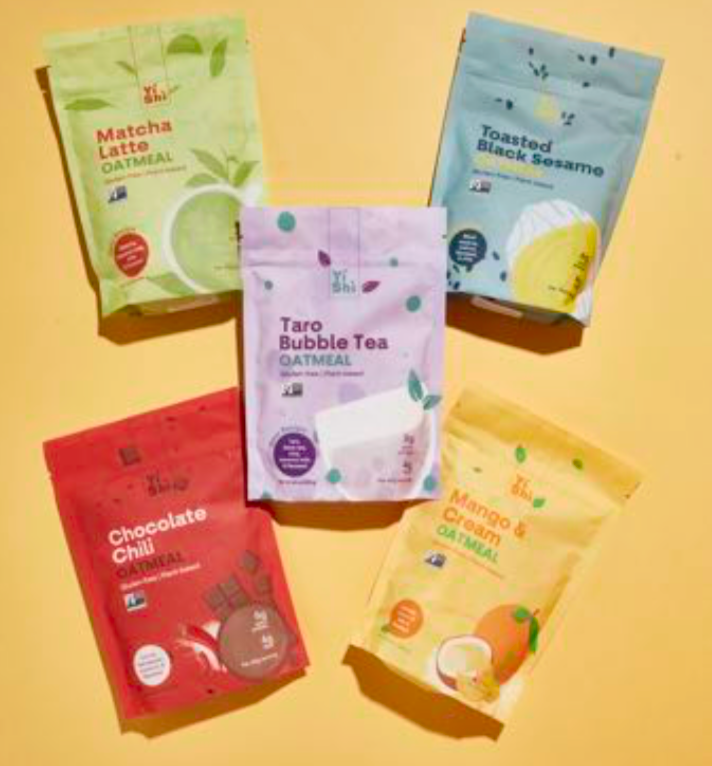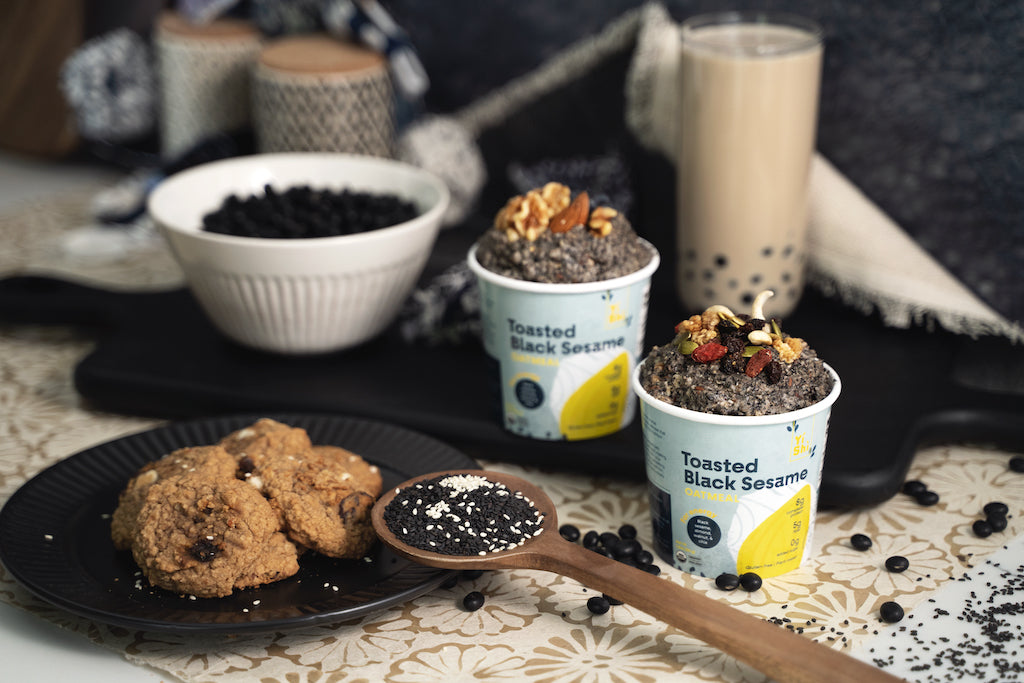
Dietary fiber is one of the most important nutrients that we can get in our diet. It’s also one of the most neglected – in fact, a whopping 95% of Americans aren’t meeting their dietary fiber recommendations. It’s time to talk about fiber and why you should really be getting more of it.
What is fiber?
Fiber is a carbohydrate found in plant-based foods. Your digestive system can’t digest fiber on its own. Instead, it passes through your gastrointestinal tract mostly intact, although some of it is metabolized by the bacteria in your gut.
There are two different forms of dietary fiber: insoluble and soluble.
Soluble fiber
Soluble fiber dissolves in water to create a gel-like material that has been linked to better cholesterol levels and blood sugar management.
Insoluble fiber
In contrast, insoluble fiber does not dissolve in liquid. Instead, it passes through your digestive system, bulking up your stool and promoting movement through your gastrointestinal tract.
Ideally, you should be getting a good mix of both soluble and insoluble fiber in your diet, which means eating a good mixture of plant-based foods like whole grains, legumes, nuts, seeds, fruits, and vegetables.
Benefits of increasing your fiber intake
Eating more fiber can be beneficial for your health in a number of ways:
- Supports your heart health by managing your cholesterol levels and lowering your risk of developing heart disease.
- Improves digestion by keeping your bowel movements healthy. Eating more fiber has even been linked to a reduced risk of colon cancer!
- Manages your blood sugar by reducing the rate at which sugar is absorbed, which can even help prevent Type 2 diabetes in the long run.
- Keeps you full for longer, which can be helpful if you’re trying to lose weight and maintain a caloric deficit.
30 High-Fiber Foods To Add To Your Diet
Looking to add more fiber to your diet but not sure where to start? Here are some of the best sources of dietary fiber :
Bran cereal
Bran is the nutritious outer layer found in wheat, oats, corn, and other kinds of grain. This portion of the grain contains a huge amount of fiber per serving (roughly 9.1-14.3 grams), making it an excellent food choice when you want as much fiber as possible.
-
Oatmeal
Getting your day started with a bowl of heart-healthy oatmeal is a great way to get a ton of nutrition all at once, with one cup of oatmeal delivering about 5 grams of fiber. Even better, oatmeal is convenient to prepare and can be either sweet or savory depending on what you’re craving that day!
Apples
That old saying “an apple a day keeps the doctor away” can at least in part be attributed to the great fiber content in each fruit! Make sure to eat the skin as well for the most fiber.
Pears
Similar to apples, pears are a great source of soluble fiber. You can eat them both raw and dried, but raw pears will have a slightly higher fiber content at 5.5 grams per serving.
Raspberries
Sweet, delicious raspberries provide an excellent source of fiber, as well as other valuable nutrients like potassium. Use them in a smoothie, as a topping for your favorite breakfast cereal or oatmeal, or eat them on their own for an easy, tasty treat.
Navy beans
Cooked navy beans are some of the best foods to boost your fiber intake since it comes with an enormous 9.6 grams per serving.
Red beans
Red beans, also known as adzuki beans, are another fiber powerhouse. You can find them in our Red Bean Berry Oatmeal, and each 3.5 oz serving contains 7.3 grams of fiber.
Chickpeas
Chickpeas, also known as garbanzo beans, come with 8.1 grams of dietary fiber per serving. They’re also full of protein, making them a popular plant-based dietary staple.
Lentils
Lentils are another highly nutritious legume. They’re rich in fiber while also fairly low in calories, so they’re a great carbohydrate choice if you’re working towards fitness goals like weight loss.
Shredded wheat cereal
Replacing your sugary breakfast cereals with a shredded wheat variety can have a big impact on your fiber intake. Depending on your cereal brand of choice, one serving can have anywhere from 5-9 grams.
Pumpkin seeds
Don’t throw out those Halloween pumpkins without roasting the seeds first! Snacking on pumpkin seeds can give you roughly 5.2 grams of fiber per ounce.
Soybeans
Soybeans are a dietary staple in many cultures, thanks in no small part to their protein and fiber. Tofu, tempeh, soy milk, and edamame are all excellent ways to incorporate more soybeans into your diet (and get plenty of fiber in the process).
Avocados
Everyone’s favorite healthy fat also comes with a surprising amount of fiber – 5 grams per each ½ cup serving, to be exact.
Chia seeds
Chia seeds are hugely popular because they contain a variety of nutrients like fiber, antioxidants, and omega-3 fatty acids. They’re also a great addition to a diet tailored to weight loss since they can help reduce appetite and keep you full for a long time. You can find these nutrient-dense seeds in our Taro Bubble Tea Oatmeal!
Pinto beans
Like many other beans, the pinto bean is another great source of dietary fiber. You’ll get about 7.7 grams of fiber in each ½ cup of this healthy diet staple.
Blackberries
Blackberries are a summertime favorite, and they’re just as nutritious as they are delicious. One serving of blackberries will give you about 3.8 grams of fiber. We recommend throwing them on top of our Toasted Black Sesame Oatmeal to add a sweet, delicious balance to the nutty flavors!
Prunes
Prunes, which are dried plums, are famous for their rich stores of fiber and are often used as a remedy for constipation. You’ll get 3.8 grams of fiber from half a cup of prunes.
Sweet potatoes
Sweet potatoes are a delicious and healthy dietary staple that can be used in a variety of ways. Bake or mash them for a tasty treat that’s rich in both fiber and Vitamin A.
Pumpkin
Canned pumpkin is good for more than just those yearly Thanksgiving pumpkin pies! On their own, canned pumpkin has 3.6 grams of fiber per ½ cup. For healthier ideas that don’t involve a ton of sugar, use this autumn staple to make hearty soups or pasta sauces.
Popcorn
Since it’s made from whole corn kernels, your movie night snack of choice comes with 3.5 ounces per 3 cups. As an added bonus, popcorn is also fairly calorie-conscious as long as you aren’t slathering on the butter.
Sunflower seeds
Sunflower seeds are a long-standing favorite salty snack, and they have plenty of nutrition to boot. A handful of these dry-roasted treats will add 3.1 grams of fiber to your daily intake.
Potatoes
Potatoes are a great complex carbohydrate with lots of fiber ( 3.6 grams, to be exact). The key is to make sure that you’re eating the skin to take advantage of all the health benefits.
Dates
Dates are sweet fruits that you’re likely to find in a dried state in most Western grocery stores. ¼ of a cup of dates will give you almost 3 grams of dietary fiber.
Quinoa
Quinoa has gained a lot of ground as a functional “superfood” in the past couple of years. One of those nutritional benefits is fiber, with a single serving of quinoa delivering 2.6 grams of it.
Whole wheat pasta
Pasta lovers rejoice! Swap out your enriched pasta for the whole-wheat variety instead to get 3.2 grams of fiber per ½ cup serving.
Whole wheat bread
On a similar note, changing your bread from an enriched/white variety to a more nutritious whole wheat brand is another smart choice for upping your fiber intake without massively changing your everyday diet.
Bananas
Adding some banana slices to your breakfast or midday snacks is a great (and delicious) way to increase your fiber intake daily. Each medium-sized banana contains 3.1 grams!
Green peas
Whether you buy them frozen, canned, or fresh, a half cup of cooked green peas can add somewhere between 3.5-4.4 grams of fiber to your meal.
Squash
Starchy squash is a great source of healthy carbohydrates, fiber included. The fiber content will vary based on the type of squash you choose, but as an example, one half cup of cooked winter squash contains almost 3 grams of fiber.
How much fiber do I need every day?
Adults should be eating anywhere from 26-38 grams of dietary fiber every day.
Is it bad to have too much fiber?
While eating more fiber is something that the majority of us could practice daily, there are some precautions to consider when it comes to the intake amount.
Some people who suffer from gastrointestinal diseases and conditions like irritable bowel syndrome (IBS) avoid eating too many high-fiber foods because it can lead to digestive upset.
High fiber diets can also cause upset stomach, gas, and bloating for those that are not yet accustomed to it. If your current diet is not a high-fiber one, consider slowly increasing your intake and check in with your doctor to ensure you’re getting the correct amount for your needs.
Conclusion
Dietary fiber is notoriously under-consumed. By upping your intake of whole grains, legumes, fruits, vegetables, nuts, and seeds, you’ll give your heart and digestive system the support that they need.


